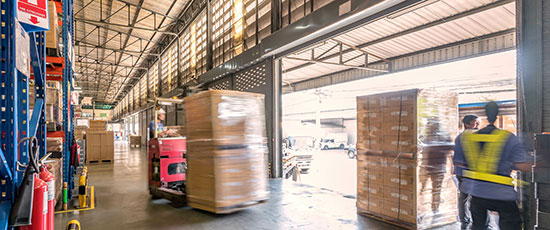Operating an efficient warehouse means optimizing for every daily procedure. Because labor alone can account for the bulk of a warehouse’s budget, streamlining common tasks can play a crucial role in saving money.
A common but occasionally overlooked opportunity for warehouse optimization is the receiving process. Although no two cargo deliveries are identical, standardized procedures and commonalities throughout the receiving process can help ensure that goods arrive accurately and expediently.
Here are three key ways to improve the warehouse receiving process:
-
Establish a high-quality pre-receiving procedure.
Streamlining the receiving process begins long before the first truck pulls up at the dock. Whenever possible, be sure to communicate clear receiving requirements to shippers and suppliers.
Account for everything from cargo unloading procedures to packaging requirements. This includes label information or acceptable package sizes, ensuring that items are ready to be moved and organized expediently upon arrival.
Creating a check-in system for received items using barcode labeling can help contribute to effective inventory management. Using the latest warehouse technology, barcode scanners or mobile barcode scanning devices can accurately confirm information. Plus, you can automatically upload data to your ERP or other back-end systems. This eliminates time consuming and error-prone manual data entry.
-
Book the proper amount of labor.
Having the right number of feet on the floor can have a serious impact on a warehouse’s bottom line. Based on the amount scheduled to arrive on any given day, take care to ensure that the right number of employees will be available to help. This includes those with forklift certifications, if necessary.
To ensure the put-away process is as productive as possible, employees will also need to how and where to stock items. To increase efficiency, you could define warehouse tasks based on workers location, status and capabilities.
In addition, consider creating tasks based on priority, security level, work zones, or equipment requirements. A comprehensive warehouse management system (WMS) can make this a streamlined process. The right WMS can link communications and real-time data together to craft efficient work orders and ensure items are stored in the right place.
-
Properly inspect stock upon arrival.
Conducting a thorough verification of received goods can help prevent future headaches and reduce costs. When counting received goods, be on the lookout for damaged products, incorrect items, or anything that may have been mislabeled.
Barcoding or RFID tagging can greatly expedite this process. This software ensures that workers have the best tools to carry out a complete and accurate inventory count. Without having to rely on manual counting methods, warehouse workers can verify shipments, serial numbers, and more with reduced room for error.
Take greater control over warehouse receiving operations with Radley’s comprehensive warehouse management system. By replacing manual procedures with fully automated workflows, Radley’s cost effective WMS can help any warehouse gain or maintain a competitive edge. See how Radley can help!
Learn more about WMS. Check out Warehouse Management Systems: A Complete Guide.

